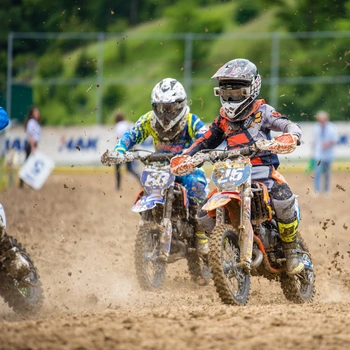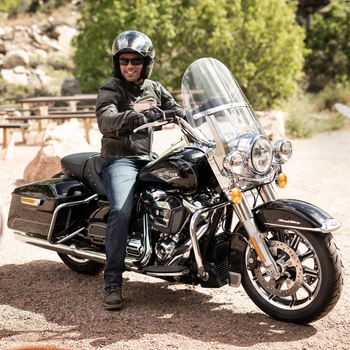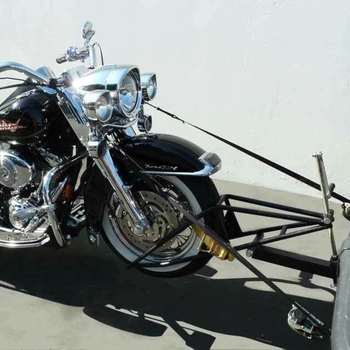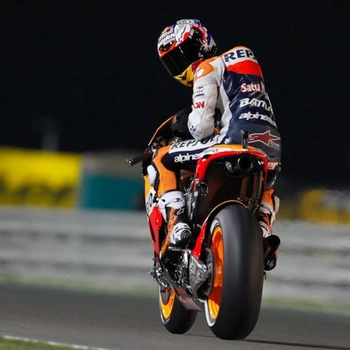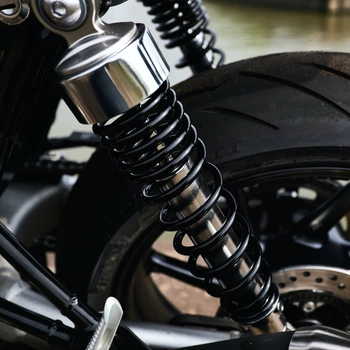
While a motorcycle suspension works to dampen the vibrations and shocks on a bouncy, rough terrain, it also gives enhanced support in braking and handling of the bike in such uneven terrains during cornering, turning or when riding at high speeds.
Before World War I, front suspensions were universally available in the motorcycles but rear suspensions on motorcycles were adopted by a majority of the manufacturers after World War II. A typical motorcycle has an upside-down fork/fork tube and telescopic suspension for the front suspension and mono shock or twin shock (dual suspension) absorbers as rear suspensions.
Near to World War II, many motorcycles came with pneumatic suspension, swingarms suspended from cart spring or leaf spring and coil spring suspension to control a pair of plungers. In later 1970s and 1980s, there were tremendous technological changes in the designing of rear suspensions based on how much far the rear wheel moves up and down (also known as rear wheel travel). Earlier the average rear wheel travel was 9-10 cm, while later in these years, became near to 30 cm, which made a significant impact on rear suspension’s designing and performance.
There are two types of motorcycle rear suspensions, one is Single Suspension (Mono Shock) and the other one is Double Suspension (Dual Shock). There are also custom-built rear shock absorbers out in the market which are built as per the specifications of the bike, riding style and weight of the bike.
What’s motorcycle suspension and how it works?
A motorcycle suspension controls the movement of wheels up and down and maintains road contact to prevent loss of traction. A motorcycle’s suspension system, be it front or rear is made up of basically two elements, one, the Spring and other is the Damper.
Spring allows the upward motion of the suspension when the wheel strikes a bump and again backs down the suspension after the bump has passed. Coil springs and Gas springs are the two most common spring types used in motorcycles apart from leaf spring which is not commonly used. Every spring has a “stiffness” parameter which defines the amount of force required to compress a spring by a given amount. For example, a spring with a stiffness rate of 5 N/mm means that the spring will compress 1 mm when a force of 5N is applied to it.
Springs are further categorised as “linear” and “progressive”. Linear springs have their stiffness rate constant irrespective of the amount of compression while progressive springs which are used in motorcycle suspension have more rate when compressed further. Coil springs are the most popular springs used in front and rear motorcycle suspension systems, formed by winding of steel rods into a coil.
The spring system of the motorcycle suspension is of no use without damper. The work of damper is to dissipate the energy stored in the suspension system when it is compressed from a bump. This helps in reducing the stress on the motorcycle’s sprung mass and keeps the suspension in control while bouncing, thereby protecting the rider from shocks. In the most basic designing of damper, there is a road attached to a piston that moves up and down in an oil-filled cylinder. The oil from one side of the piston flows to another side through valves or holes in the piston. In this way, kinetic energy is converted into heat which is then dissipated in the air.
Dual Suspension motorcycle shock absorbers
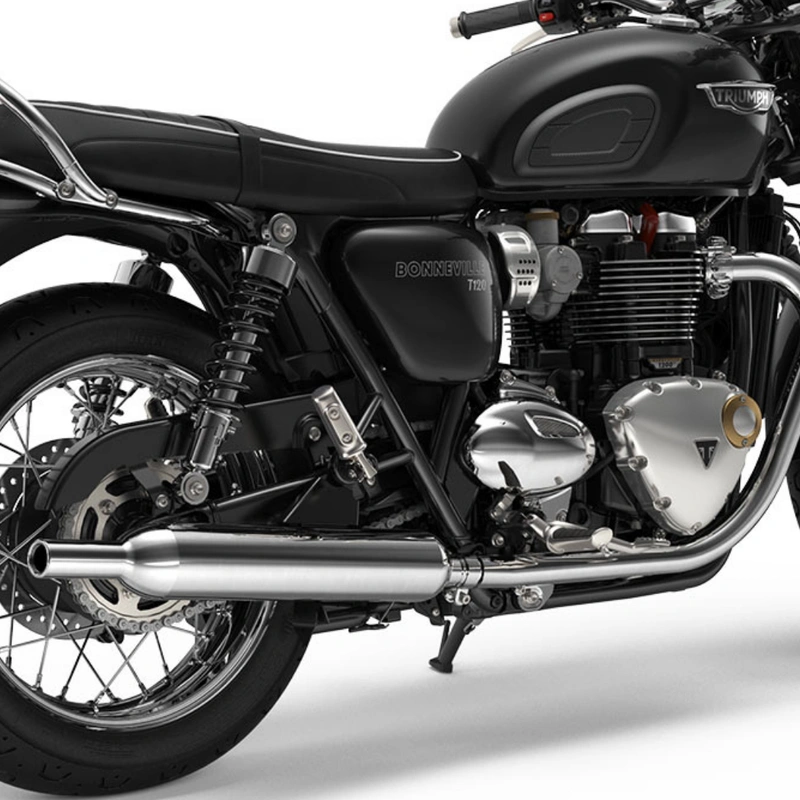
Dual suspension shock absorbers are most commonly used in commuter bikes, unlike mono suspension shock absorbers which are seen in high-performance bikes. Dual suspension motorcycles have two shockers which absorb bump better and make the ride less bouncy. These absorbers are cost-effective and easy to manufacture and maintain. As both the shockers need synchronised coordination, handling of the bike in uneven terrain becomes less stable. As a result, the uneven damping causes stability issues while cornering or riding at a high speed.
Mono Shock suspension motorcycle
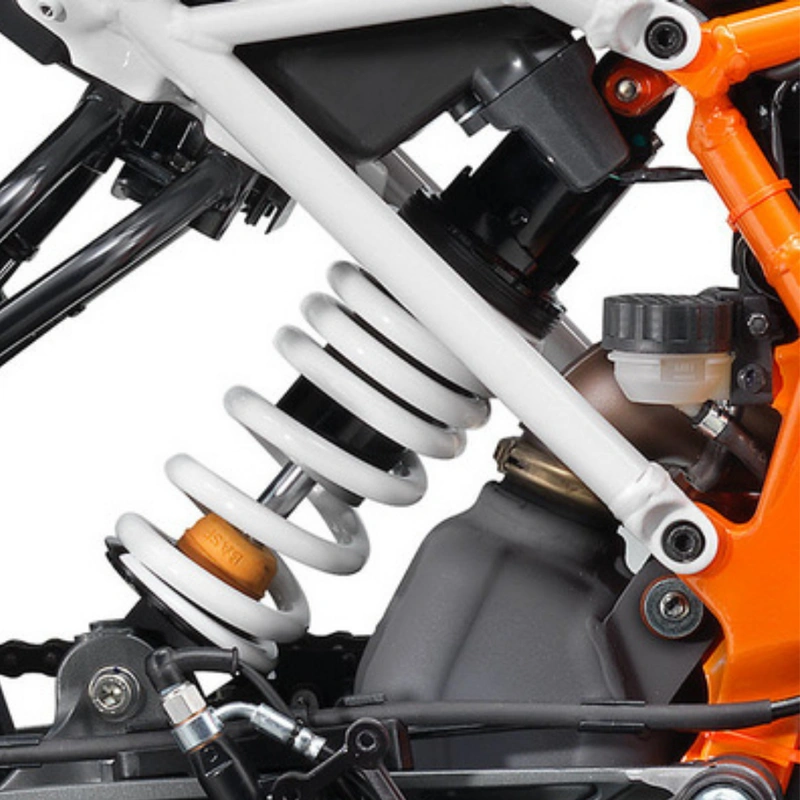
Mono shock suspension motorcycles use single shock and have a much wider piston as compared to dual-shock shockers. Mono shockers offer better contact with the surface of the road and make the rider feel like he’s gliding in the air. As it is placed just at the centre of gravity point of the bike, it offers more stability at higher speeds or while cornering. While continuously moving over rough terrain, the rider may feel shocks through the seat and bars. Mono shock absorbers are expensive to manufacture and are more complex. They are not suited to bear the excessive load and may collapse altogether. Their replacement cost is also very high.



